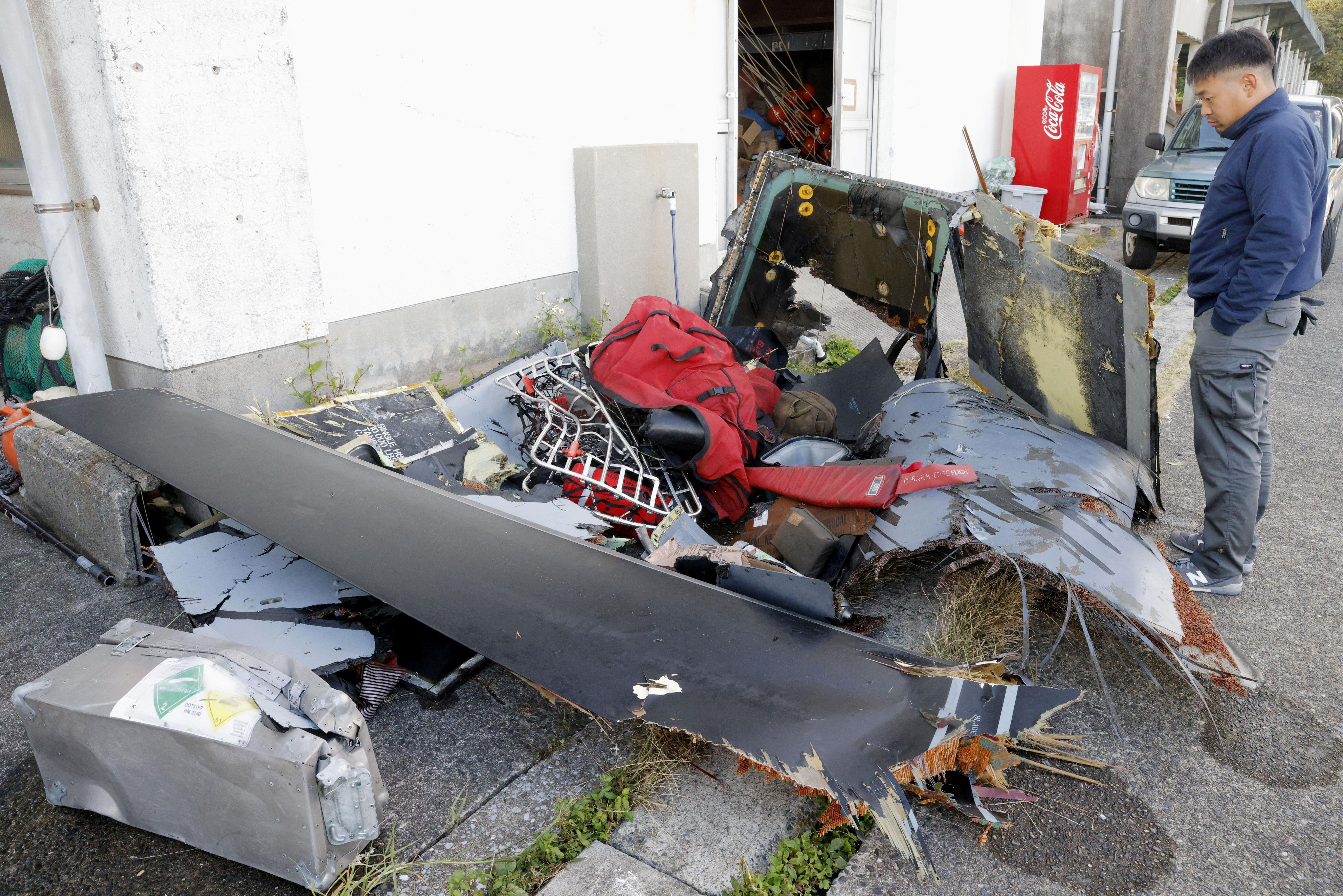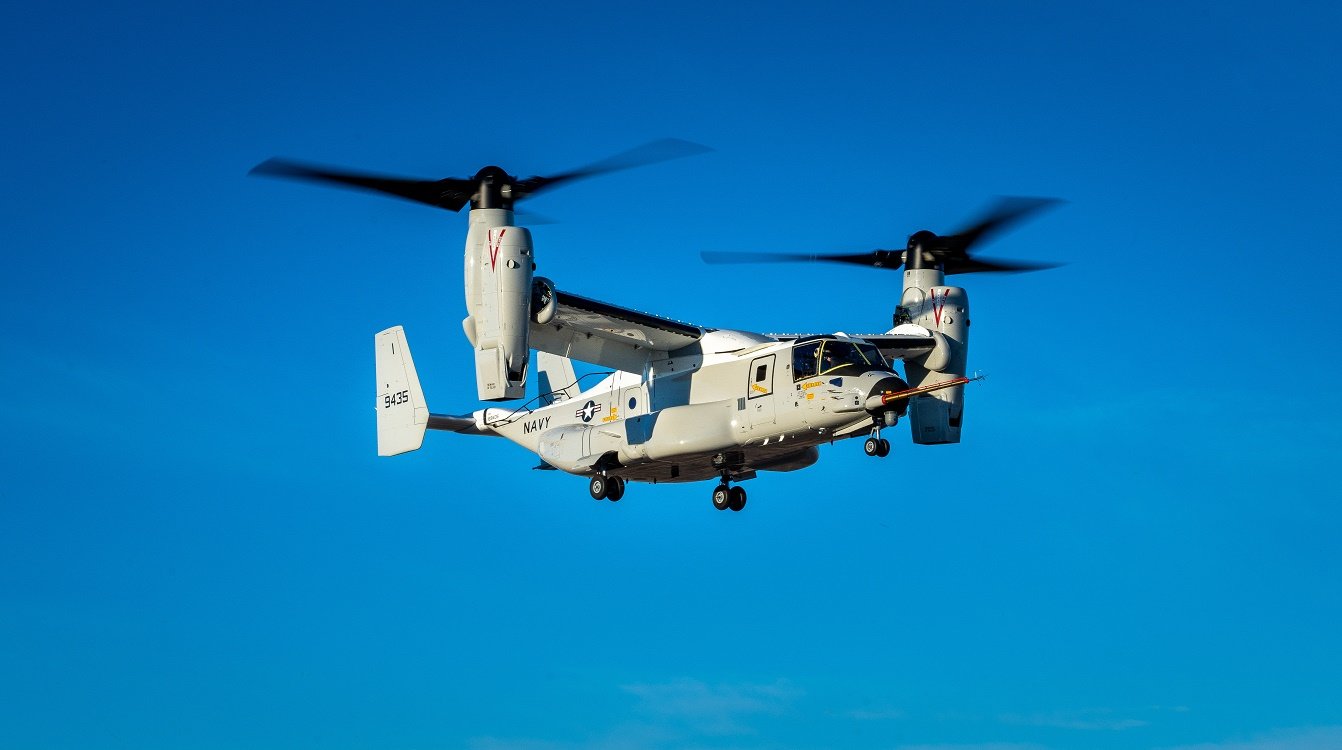The US is unwilling to let go of the CV-22B Osprey despite the frequent crashes over the last few years. The unique features of the Tiltrotor had even attracted the Indian military to contemplate acquiring the unique aircraft.
The US Air Force Special Operations Command may have finally found answers to “what failed” on the CV-22B Osprey tiltrotor aircraft months after a fatal crash off the Japanese coast in November 2023, which eventually led to its grounding.
The Air Force Special Operations Command said in a statement on February 21 that while it was aware that a malfunction had happened on the aircraft, which led to the fatal crash, killing all eight crew members on board, it couldn’t find out why the failure happened.
“At this time, the material failure that occurred is known, but the cause of the failure has not been determined. Engineering testing and analysis are ongoing to understand the cause of the material failure, a critical part of the investigation. Any disclosure of findings before investigations are finalized is premature and presumptive,” Air Force Special Operations Command said in a statement published on February 20.
Within a few days of the crash, the Air Force was able to determine that the deaths were caused by a material failure or something going wrong with the aircraft rather than a crew error. Last month, the service retrieved the aircraft’s black box, which surprisingly was found unscathed.
The Air Force Special Operations Command also stopped short of disclosing the specifics of the malfunction to the public. The command is conducting a thorough examination of the CV-22 tilt rotor program. Additionally, a Safety Investigation Board probe and an Accident Investigation Board inquiry are also being processed.
Although much information hasn’t been released through official channels, anonymous Pentagon officials have told media outlets that the inquiry was moving along and that the intricate system of clutches and gearboxes on the aircraft could be the cause of the problem.

A gearbox fault known as hard clutch engagement, which can cause power to surge in one rotor and destabilize the aircraft, is an Osprey issue that has dogged the military since 2010. The issue resulted in two instances in 2022 where Air Force Ospreys had to perform emergency landings.
Five persons on board the V-22 Osprey were killed in a similar horrific accident that occurred on June 8, 2022, when a hard clutch engagement (HCE) struck the aircraft as it was flying over Southern California’s deserts.
The US Marine Corps (USMC) initially claimed that its crews could find a solution to the problem, but according to an investigation published on July 21, the skilled pilots were powerless as they were unable to anticipate the issue and were unable to respond in time.
Currently, the US officials acquainted with the preliminary findings are investigating a potential incident with the propeller rotor gearbox of the aircraft, as reported by NBC News.
The report also noted that a chip from the Osprey’s proprotor gearbox could be the cause of the crash. Small metal fragments that wear off aircraft gears can produce hazardous metal debris that can damage engines.
A few Osprey accidents have brought attention to the gearbox, and parts have been breaking down earlier than anticipated. Bell-Boeing received a $12.7 million award from the Department of Defense in January 2023 to enhance the gearbox design for all Air Force, USMC, and Navy Osprey models.
However, despite these technical issues that may contribute to fatal crashes, the United States has been fairly reluctant to give up on the aircraft. Over calls that the aircraft should be phased out due to the recurrent safety concerns, Pentagon spokeswoman Sabrina Singh said at a press briefing last year emphasized that “we do certainty have confidence in the Osprey.”
The statement was made even though Osprey crashes have claimed the lives of over 50 US servicemen in the last several years, with 20 of those deaths occurring in four crashes that happened in less than two years.
Though the US Department of Defense has toned down its unconditional allegiance to an aircraft that keeps crashing, it is working to ensure its return rather than consider a plan to phase out the aircraft.
The aircraft has garnered interest from around the world due to its unique design and functions: It is a unique multirole combat aircraft that combines the vertical performance of a helicopter with the speed and range of a fixed-wing aircraft using tiltrotor technology. At one point, even India considered acquiring the Osprey.
When India Considered V-22 Ospreys
In 2015, the Indian Aviation Research Centre (ARC) expressed interest in purchasing four V-22s for the Special Frontier Force’s deployment in border regions, logistical support, and personnel evacuation in hazardous environments.
The Indian Navy also reportedly studied the V-22 rather than the E-2D for airborne early warning and control to replace the short-range Kamov Ka-31.
India reportedly initiated the request for interest in the V-22 sometime in late 2010. The Indian Air Force received the first and second levels of detailed presentations, leading Boeing to announce in 2012 that it was seeing a lot of interest from India and that initial talks were in progress.
When the Indian Navy entered the discussion in 2013, it took a quick look at the V-22 and considered using it for carrier logistics and resupply.
The Navy called the US to request information on Osprey platform pricing and availability. By 2015, reports suggested that the Indian military—possibly the Indian Air Force—was considering purchasing six V-22s for “rapid troop insertion in border areas.”
At one point, reports emerged that the Indian military had specific queries regarding the V-22’s capability to fly to India’s island territories in the Arabian Sea and Bay of Bengal. Attention had been aroused by the platform’s unfuelled range. There is no record, however, of any specific proposals being discussed.

While the US Air Force employs the CV-22 for long-range special operations and contingency operations, the US Marine Corps uses the V-22 for combat assault, amphibious assault, and sustained ground operations. When the aircraft was on offer, it was believed that all of these missions would be of interest to the Indian Air Force for potential humanitarian aid as well as special operations roles in the future.
As for the Indian Navy, it was believed that the aircraft would fulfill its qualitative needs with vertical takeoff and transition into fixed-wing flight. This is essential because a catapult launcher is not needed for vertical takeoff and recovery, and fixed-wing flying offers significantly more range and speed.
However, when probed by EurAsian Times on India’s interest in the tiltrotor aircraft, a retired high-ranking official of the Indian Navy said, “I did have a chance to analyze the performance and limitations of this aircraft, technical specifications, and operating environment. We found it did not meet the criteria that were being set as a benchmark.”
Meanwhile, the Pentagon’s Sabrina Singh informed on February 20 that “the Ospreys are not going back in the air at this time.” She stated that the military services would decide when it is safe for them to fly once more.
- Contact the author at sakshi.tiwari9555 (at) gmail.com
- Follow EurAsian Times on Google News




